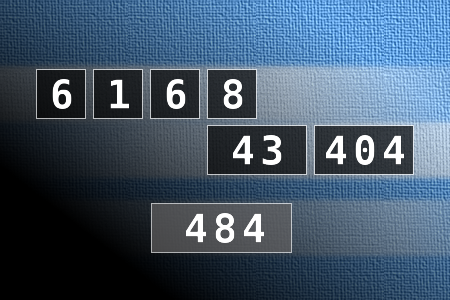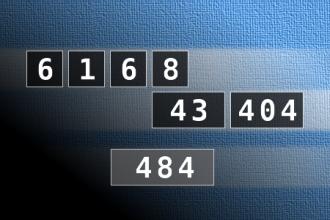Calculate the number 484
NUMBERMANIA: Calculate the number 484 using numbers [6, 1, 6, 8, 43, 404] and basic arithmetic operations (+, -, *, /). Each of the numbers can be used only once.Correct answers: 18
The first user who solved this task is Nílton Corrêa De Sousa.
#brainteasers #math #numbermania

